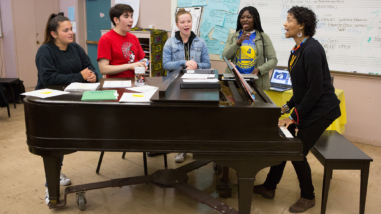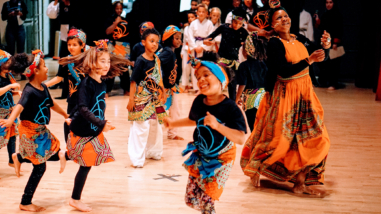John McGuirk completed his eight-year term as director of our Performing Arts Program in November 2017. He recently answered questions for an “exit interview” with arts blogger Barry Hessenius, on topics ranging from foundation collaboration and data gathering to what’s next for the field. Here is an excerpt; the full interview is available at Barry’s Blog.
Barry: You have been at the center of foundation arts philanthropy in Northern California for almost two decades as a performing arts program officer for the Hewlett Foundation, the arts program director of the Irvine Foundation, and then back as the director of the Hewlett Foundation’s Performing Arts program. What has changed during that long tenure? What’s different about arts philanthropy today from the past, and where is it headed?
John: I believe the most significant change in arts philanthropy I’ve seen over the past two decades is the growing importance of cultural equity in grantmaking. This has its roots as far back as “multi-culturalism” in the 1980s when I first entered the field. Racial equity is a more recent priority at the national level as articulated by Grantmakers in the Arts.
As an example, we can look at cultural equity and the diversification of the Performing Arts Program’s grantee portfolio. Since its founding, Hewlett Foundation invested deeply in Western classical performing arts organizations (orchestras, theaters, operas, and dance companies) and these art forms merit continued support. But our region’s demographics have changed rapidly, and cultural tastes and consumer behaviors have also evolved. This meant that the art forms and aesthetics represented in the grantee portfolio needed to broaden and adapt to reflect the composition of our region. It has been my personal goal, no matter where you live in the greater Bay Area, that you have access to arts and cultural experiences that are both relevant and affordable. With an annual grants budget exceeding $20 million, the Performing Arts Program now directly funds more than 225 diverse organizations, and reaches another 600 organizations through our regranting partnerships with local arts councils, service organizations, and funding colleagues. Community-based organizations working in a wide variety of disciplines, aesthetics and cultural traditions are now an integral part of the grantee portfolio. One of my favorite projects during the past 18 months was working with author and consultant Laurie MacDougall to write “A Fifty Year History of the Performing Arts Program.” It documents the evolution of Hewlett’s philanthropic strategies in the arts over the past five decades, deeply rooted in multi-year general operating support and responsive to the ever-evolving cultural landscape.
Barry: Given Helicon’s recent follow up report showing that in the past five years there has been an actual decrease in equity funding, what needs be done to change that reality?
John: Helicon Collaborative’s report, “Not Just Money: Equity Issues in Cultural Philanthropy,” found that since its initial study in 2011, “funding overall has gotten less equitable, not more.” However, San Francisco is singled out as an exception to this national trend, and the report notes that sustained and systemic efforts have “produced funding distribution patterns that more closely reflect the city’s demographic profile and the diversity of the local cultural sector.” The report specifically mentions the work of the Irvine, Haas, and Hewlett Foundations, as well as the Alliance for CA Traditional Arts, Theatre Bay Area CA$H, Dancers Group CA$H, and the Creative Work Fund. “As a result of this multi-faceted and sustained work,” the report states, “not only does San Francisco have more diverse nonprofit cultural groups per capita than other cities, those groups also receive a significantly larger share of arts foundation funding than their counterparts in the other urban areas studied.”
The Bay Area has long valued cultural equity. Diversification of grants portfolios takes sustained efforts to achieve, but it is producing results over time. Grantmakers need to be cognizant of historical funding patterns and structural racism that have led to current disparities in arts funding, and persistently address these as individuals, organizations, and communities. We need to continue to adapt our funding priorities, application processes and selection criteria to ensure a broad and diverse applicant pool and grantee portfolio.




